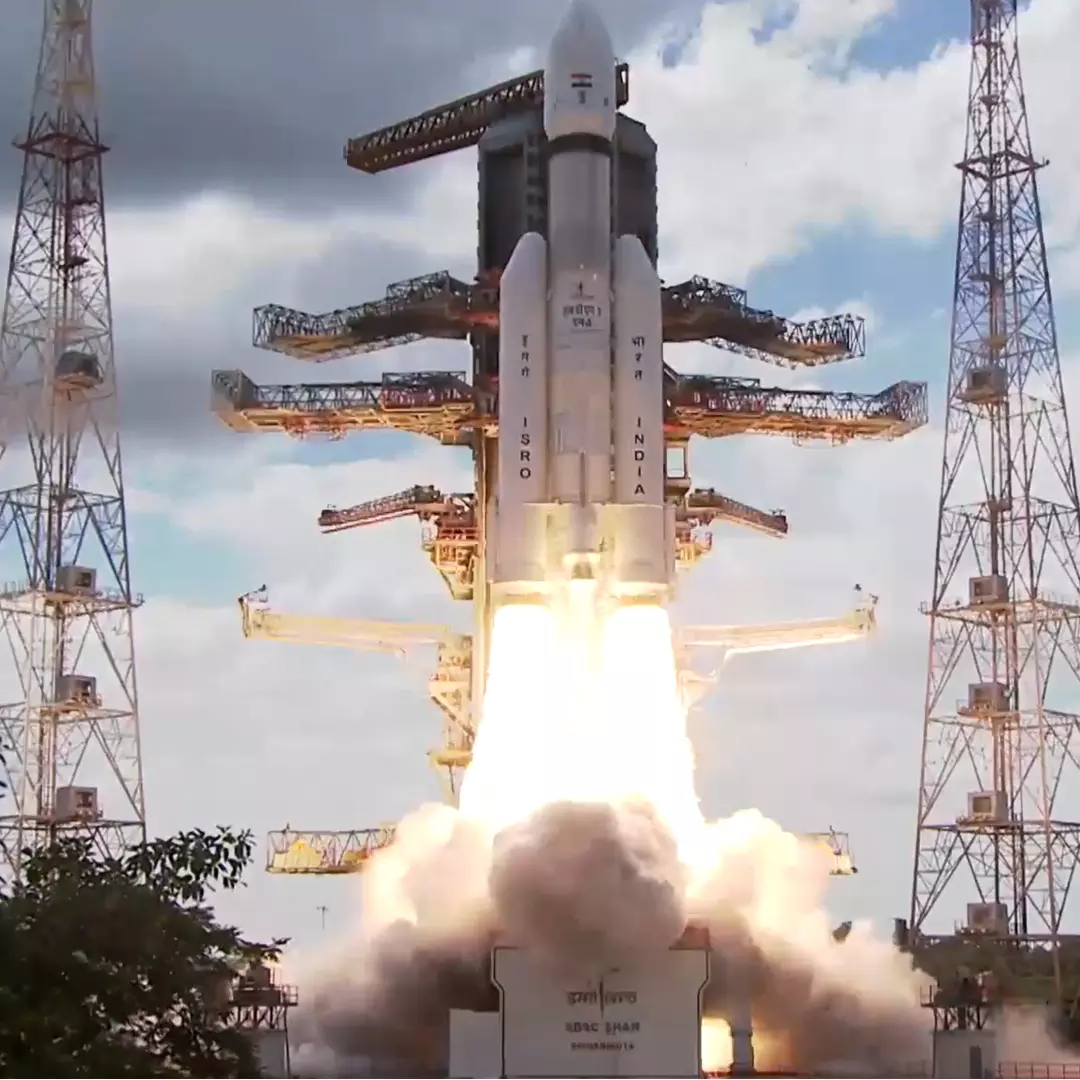India’s Chandrayaan-3, the country’s third lunar mission, took off from the Sriharikota launching range on Friday. This mission aims to overcome the setback of the Chandrayaan-2 mission, which experienced a crash landing on the lunar surface in 2019. Significantly, the design of Chandrayaan-3 has undergone important improvements to ensure the avoidance of any mishaps.
The ambitious Chandrayaan-3 mission involves collaboration with various international space agencies, including counterparts from Europe, Australia, and the United States in partnership with the Indian Space Research Organisation (ISRO). This mission is part of ISRO’s Chandrayaan series, which aims to demonstrate new technologies necessary for interplanetary spaceflight and achieve India’s first soft landing on another celestial body.
The lander module of Chandrayaan-3 is equipped with instruments to measure surface temperature, seismic activity, and carries a laser retroreflector provided by NASA, among other components. The rover, equipped with scientific instruments, will investigate the composition of the lunar surface material in the vicinity of the landing site. Surface operations are expected to last for approximately 14 days, as per a report in The Times Of India.
The successful launch of Chandrayaan-3 received congratulations from international space agencies. Both NASA and the European Space Agency (ESA) lauded India’s achievement in sending the spacecraft on a historic mission to the far side of the moon. The 3.8-tonne Chandrayaan-3 spacecraft was launched into orbit by India’s heavy rocket, the LVM-3 .
It is a significant follow-up to the Chandrayaan-2 mission, which faced challenges during its landing phase when the lander named Vikram encountered difficulties and crashed onto the lunar surface. The new mission aims to build upon past experiences and advancements in technology to ensure a successful soft landing on the moon.
“Congratulations to ISRO on the Chandrayaan-3 launch, wishing you safe travels to the Moon. We look forward to the scientific results to come from the mission, including NASA’s laser retroreflector array. India is demonstrating leadership on #ArtemisAccords!” Bill Nelson, NASA administrator on Twitter.
Leaders across party lines hail Chandrayaan-3 launch The top Indian leadership and politicians cutting across party lines on Friday hailed the launch of ISRO’s ambitious third lunar mission Chandrayaan-3 with Prime Minister Narendra Modi calling it a “new chapter” in the country’s space odyssey which has elevated the dreams and ambitions of every Indian.
Best wishes for Chandrayaan-3 mission! I urge you all to know more about this Mission and the strides we have made in space, science and innovation. It will make you all very proud. https://t.co/NKiuxS0QaE
— Narendra Modi (@narendramodi) July 14, 2023
CM @pinarayivijayan congratulated all behind the successful launch of India’s third lunar mission #Chandrayaan3. It is a proudest moment for all Indians as the mission will bring in groundbreaking results in space research. pic.twitter.com/0PPRrm04Rk
— CMO Kerala (@CMOKerala) July 14, 2023
Sixteen minutes after lift-off, propulsion module successfully separated from the rocket and would orbit the earth for about 5-6 times in an elliptical cycle with 170 km closest and 36,500 km farthest from earth moving towards the lunar orbit.
Chandrayaan- 2 Mission In 2019
Chandrayaan-2, the second lunar exploration mission by the ISRO, encountered an unfortunate setback during its landing attempt. The mission, which consisted of a lunar orbiter, a lander named Vikram, and the Pragyan rover, aimed to study lunar surface composition and the presence of water.
Launched from the Satish Dhawan Space Centre in Andhra Pradesh on 22 July 2019, Chandrayaan-2 successfully entered the Moon’s orbit on 20 August 2019. It then began maneuvers to position the lander for a planned landing on the lunar surface in the south polar region at a latitude of about 70° south on 6 September 2019.
However, during the landing phase, the Vikram lander deviated from its intended trajectory and crashed onto the lunar surface. A subsequent failure analysis report revealed that a software glitch was responsible for the mishap. This setback was a disappointment for the mission, which had aimed to achieve a soft landing on the Moon and conduct extensive scientific research. The ISRO’s ₹978 crore unmanned mission failed its objective after the lander ceased communication to the ground stations at an altitude of 2.1 km from the surface of the Moon. Soft landings, described by former ISRO chairman K Sivan, are “15 minutes of terror” which present a challenge due to the precise timing required for the rocket engine to fir..
Undeterred by the setback, ISRO has embarked on a new mission called Chandrayaan-3. Launched on 14 July 2023, Chandrayaan-3 is an attempt to re-establish India’s presence on the lunar surface. The mission’s objective remains similar to Chandrayaan-2, focusing on mapping and studying lunar surface composition and water availability. The new mission is expected to land near the lunar south pole region on 23 August 2023.
Also Read: AP Cabinet Approves Proposal To Give Complete Rights To Those Holding Assigned Lands
https://thelogicalindian.com/h-upload/2023/07/15/500x300_232572-web-2023-07-15t111154999.webp
Trending
2023-07-15 08:37:10.0
“Proudest Moment For All”: Nation Cheers Launch Of Chandrayaan-3











